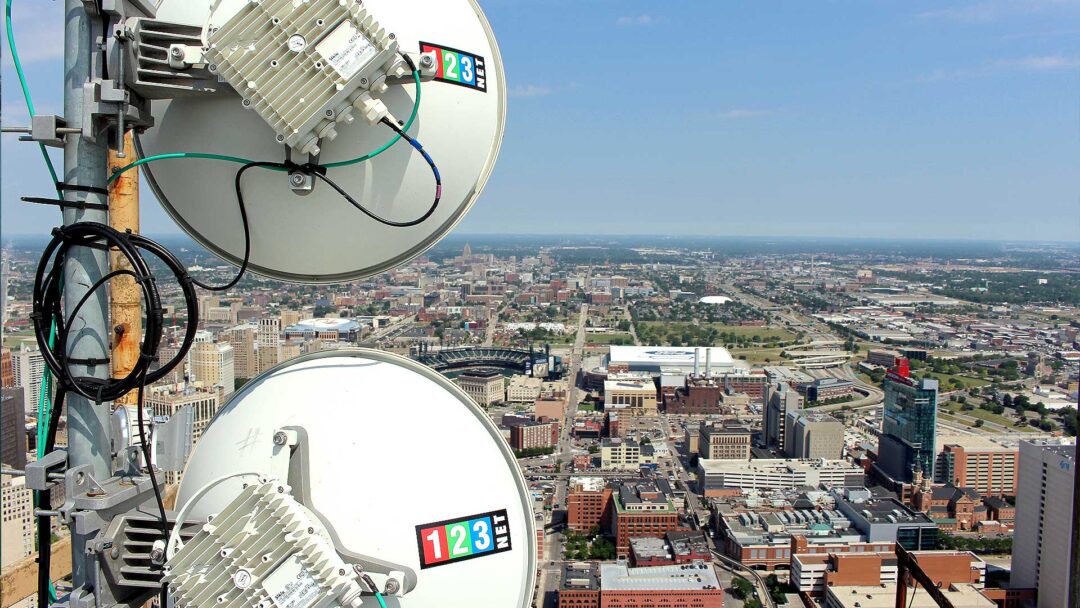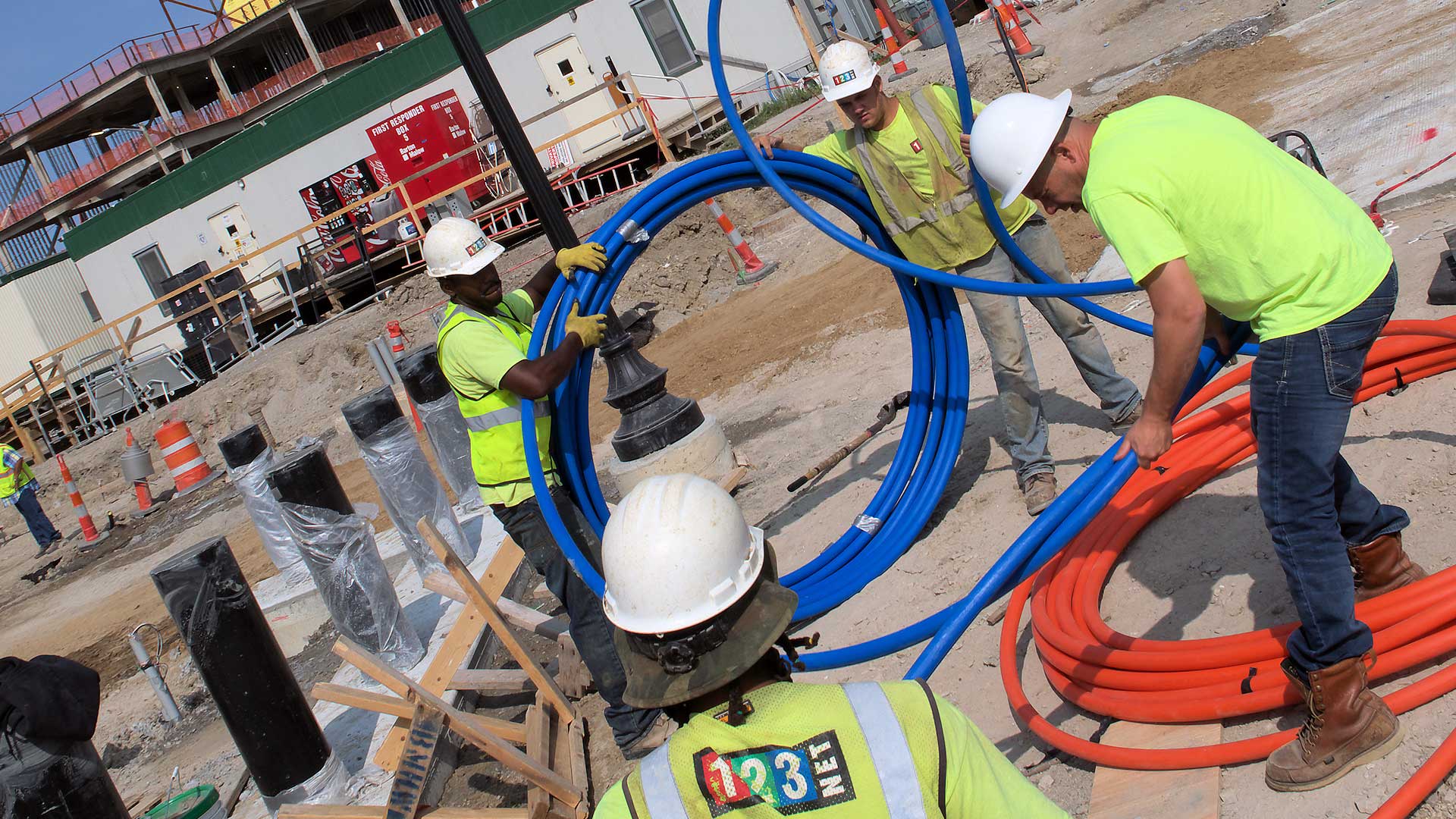
Article featured in the June 2017 issue of CAM (Construction Association of Michigan) magazine.
E-Construction is a proven and cost-effective approach to streaming communication for major construction projects. However, that doesn’t mean that it’s easily accomplished.
Consider:
- Job sites are typically scattered with trailers and temporary work stations housing people from dozens of companies
- Beyond the job site, construction projects are supported by other groups and suppliers who may be down the street or across the globe
- Major project plans are massive in scope, creating very large data files
- Updates and changes are frequent
- All project partners need to be immediately aware of changes
“A dedicated wireless solution is a perfect fit for the campus-like setting that exists on a job site,” said Jim Hart, director of wireless at 123NET, a Michigan-based internet services provider that has built many customer fixed wireless environments. “Essentially you create a mini-PoP site (Point of Presence) that can offer incredibly high capacity, scalability and reliability across the entire community of project partners – all with relatively low start-up costs.”
Unlike “land-base” internet applications that are more costly and time-consuming to implement, wireless applications can be fully installed in just a couple of days. The relatively low cost makes the solution practical even for a temporary installation like a construction site. Wireless internet has long been used for what is commonly called “the last mile.” These are the connections directly between a user population and an internet network hub and are often utilized in a rural environment or other difficult locations, like construction sites.
For Doug Elbinger at Newman Consulting Group, it’s all about the speed and reliability. “We’re often transmitting huge data files to multiple stakeholders. And when a change order comes through, it’s critical that the entire team sees the revised files in real time. Any delay or miscommunication can have costly consequences, so opportunities to improve connectivity are vital to project success.”
The wireless approach is comparatively easy. In the case of 123NET, the company installs a fixed wireless base station or microwave parabolic dish (the access point) at the project site with network access provided to all project partners. The station uses a high-frequency radio link to connect to another wireless site or other facilities. Not unlike the highway system, some connections are long haul routes that connect major population centers (like a highway or turnpike) whereas other connections are much shorter (like streets in a neighborhood).
As Hart points out, “with all the talk of ‘virtual’ communications and businesses ‘moving to the cloud,’ it’s easy to overlook the fact that the internet is, in fact, enabled by very real and very tangible technology. Different technologies are more or less efficient depending on the application. “Our fixed wireless is being widely used on more and more temporary applications. It’s proven to be the perfect solution managing the unique requirements of the construction site.”




